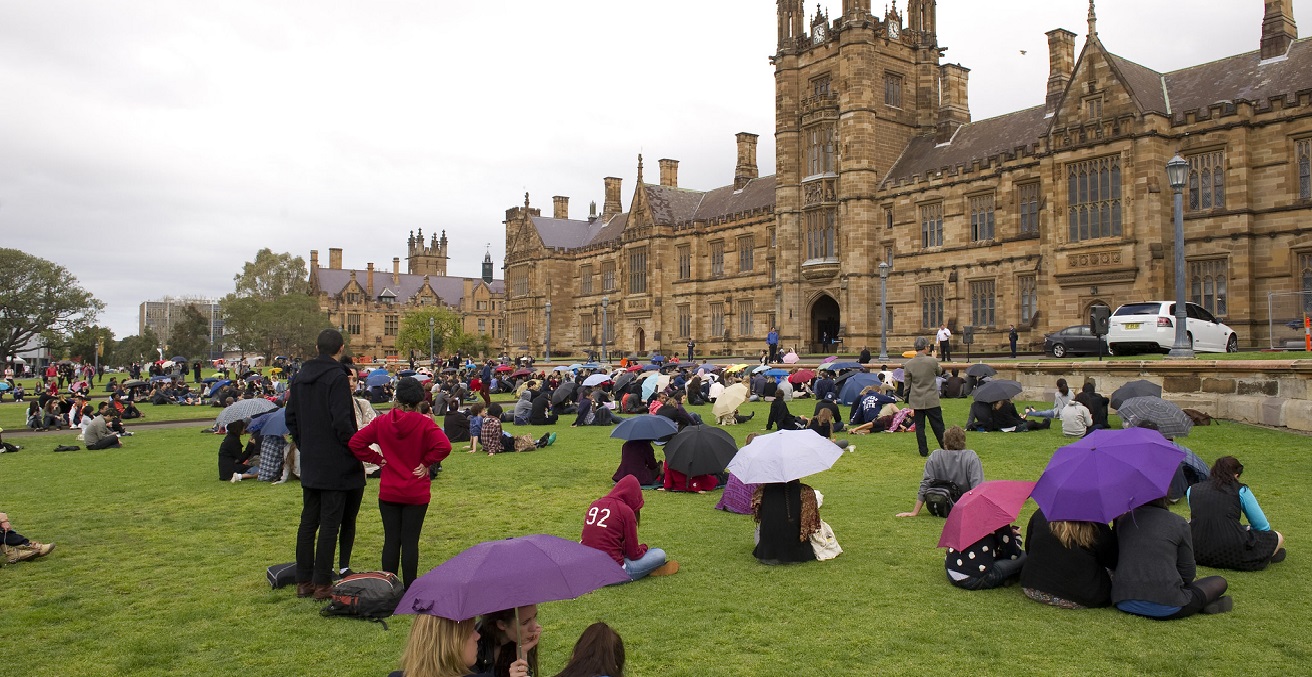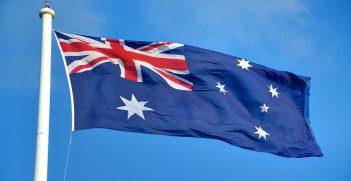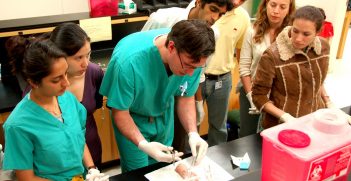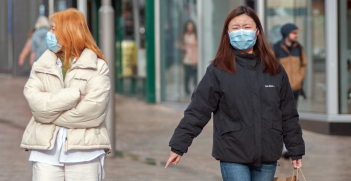Most Read of 2020: Living in the Fast Lane: How Australia Can Return Its International Students

As Australian universities look to bring back their international cohorts, they should look to countries such as China, Hong Kong, Singapore, and South Korea. Procedures used in these countries illustrate a safe and efficient path to a new normal for tertiary institutions.
This article was one of the most read in Australian Outlook in 2020.
Some Australian universities have decided to move from pure online teaching to a hybrid of online and on-campus teaching for the second half of 2020. This means international students must find a way to return to campus for in-person learning. Chartered flights have been proposed to help international students to return to Australia, although these flights have been suspended due to the recent COVID-19 outbreak in Victoria. After containing this outbreak, the Australian government should resume plans to return international students. Returning international students is important in ensuring they can receive high-quality education, relieving the crippled financial situations of universities, and reviving rental and catering business in university areas.
Most international students at Australian universities are from China. China has strictly controlled the COVID-19 pandemic, and is actively experimenting with fast travel lanes with Hong Kong, Singapore, and South Korea. These fast lanes are established based on states mutually recognising each other as COVID-19 low-risk areas, based on test results and the use of contact tracing apps. Their experience may provide useful insights for Australia to maintain public health while bringing back international students.
International movement of people is a type of trade. Pandemic control may involve sensitive personal health data. To protect this data, states have enacted divergent privacy laws. The Comprehensive and Progressive Agreement for Trans-Pacific Partnership (to which Australia is a party), the Australia-Hong Kong Free Trade Agreement (“FTA”), and the Australia-China FTA all encourage their member states to acknowledge regulatory differences, and develop mechanisms to promote compatibility between divergent domestic regimes of privacy protection. One suggested mechanism in these agreements is the mutual recognition of regulatory outcomes.
Mutual recognition of contact tracing apps has been partially achieved between mainland China, Hong Kong, and Macao. Due to close economic connections and geographic proximity, a large number of people need to commute regularly between the three jurisdictions. In order to promote travel bubbles, Macao and the neighbouring mainland Chinese city of Zhuhai have recognised each other’s health code app systems since May 10, 2020. Consequently, people in Macao can travel to Zhuhai without being subject to a 14-day quarantine period by showing a green QR code. Hong Kong has also proposed a Health Code app for people travelling between Hong Kong, Macao, and the Guangdong province without being quarantined for 14 days. The Hong Kong health code app is based on COVID-19 test results (deep-throat saliva test or nasopharyngeal swab nucleic acid test). Anyone who tests negative is eligible to apply for a health QR code online. A QR code, once approved, is valid for seven days. If a person travels within the seven days, this person is not subject to a 14-day quarantine. No transfer of personal data may occur between the three regions. The Hong Kong Health Code app should be distinguished from immunity passports. This is because it relies on COVID-19 test results, while the immunity passports depend on the history that an individual has been infected by COVID-19 so is purported to be immune. According to the WHO, no evidence shows that people who have recovered from COVID-19 will be permanently immune from the disease. Therefore, Hong Kong Health Code app is likely more accurate than immunity passports. However, because the Health Code app is generated by one COVID-19 test before departure, it also may not be 100 percent accurate. Thus, it may not be suitable for people who travel afar in considering both COVID-19’s long incubation period and the fact that a person may be infected without testing positive in this period. Moreover, a person who has tested negative before travelling may be infected during the trip or at the destination, so it is hard to say whether this person is COVID-free when returning to Hong Kong.
For long-distance travellers, mainland China has established a “fast lane” arrangement based on the mutual recognition of health test results with South Korea and Singapore. Since June 3 2020, essential business travellers can use this fast lane to fly between Singapore and six low-risk Chinese regions (Shanghai, Tianjin, Chongqing, Guangdong, Jiansu and Zhejiang). Travellers are required to undertake a polymerase chain reaction (PCR) test within 48 hours before departure and obtain a medical certificate of having tested negative for COVID-19. Travellers from China to Singapore must have remained in any of the sending Chinese fast lane regions for the last seven days prior to departure for Singapore. Upon arrival, travellers should undergo a PCR test in Singapore (if arriving in China, travellers should take both PCR and serology tests) and be quarantined for one to two days until the test result is released. Travellers can go to their workplace or residence if tested negative. If positive, the traveller will undergo medical treatment immediately. They must use China’s local Health QR Code or Singapore’s TraceTogether for the duration of their stay in China and Singapore, respectively. Costs for all the tests, quarantine and medical treatment (if applicable) should be borne by the travellers. In the first 14 days, travellers should also adhere to itineraries they have submitted to authorities. They may not use public transportation for this purpose with the exception of taxis or cohorted company transport.
The “Fast Lane” Procedure for Chinese Personnel Travelling to South Korea for Important Business, Logistics, Manufacture and Technology Service also exempts 14-day quarantine for Chinese travellers starting from 1 May 2020. This Fast Lane is between South Korea and 10 Chinese cities. Besides the regular application materials for a Korean visa, a Chinese applicant should also submit a health certificate issued by a medical institution in China within 48 hours before the date of visa application; the certificate should provide that the applicant is without symptoms of fever, cough, pneumonia, etc. After obtaining a visa and before travel, a traveller can apply for ‘Exemption from Quarantine’ by submitting to the Korean Embassy or Consulate a confirmation letter of the negative nucleic acid test for COVID-19 issued by a medical institution in China obtained within 72 hours before departure. Upon arrival, the traveller should undertake a second COVID-19 test at the airport. If tested positive, the traveller is not subject to 14-day quarantine. When in South Korea, the traveller must use the Korean Self-Quarantine Safety Protection app and report his or her health conditions to the Korean government.
All these fast lane arrangements aim to maintain public health while reducing the 14-day quarantine period and boosting international travel bubbles. Although currently these fast lanes apply to business travellers only, in the future they may be extended to other travellers including international students. Learning from China, Singapore and South Korea, after containing the Covid-19 outbreak in Victoria, Australia may also consider establishing a fast lane for international travellers including students.
There are no obvious legal barriers for Australia to identify low-risk regions and require international students to do COVID-19 tests before departure and upon arrival. This is because each state has right to decide to whom they would grant visas. Also under Article 43.1 of the International Health Regulations (2005), states can implement health measures that “achieve the same or greater level of health protection than WHO recommendations” in response to specific public health risks or public health emergencies of international concern. Requiring COVID-19 test results as a precondition for visa does not violate the International Health Regulations.
However, Section 94 H of Privacy Amendment (Public Health Contact Information) Act 2020 forbids anybody to require another person to download and use COVIDSafe app. A solution is to provide options to international students who tested negative before departure and upon arrival. One option is to download and use COVIDSafe app so that they can be exempted from the 14-day quarantine; and the other is to go through the 14-day quarantine. If they voluntarily select the first option, there is no violation of Section 94 H. Moreover, in order to facilitate international travellers to use local contact tracing apps, Singapore government requires them to register with the TraceTogether app by using their passport information and telephone numbers, Mainland China launched an international version of the Health Code app, and South Korea provides various language versions of Self-Guaranine Safety Protection app. These may provide useful insights for Australia to enhance the COVIDSafe app.
Australia government should consider building a Fast Lane for international students from identified COVID low-risk countries or regions. For travellers who are tested negative before departure and upon arrival, if they voluntarily consent to the use of the COVIDSafe app, they can be exempted from the 14-day quarantine. Compared with the current sweeping quarantine requirement, the Fast Lane method could help maintain public health and create a relatively safe and efficient pathway forward to a new normal for tertiary institutions.
Jie (Jeanne) Huang is an associate Professor at the University of Sydney Law School. She specializes in conflict of laws and data economy. She can be reached at Jeanne.huang@sydney.edu.au.
This article is published under a Creative Commons License and may be republished with attribution.





